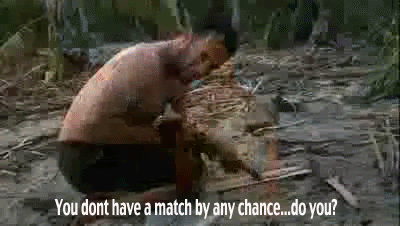Smart employers take responsibility for promoting personal and skill development in rapidly transforming economy
Recently, we were given an assignment to assist in the development of maintenance and material planning at the Massachusetts Bay Transportation Authority (MBTA). The MBTAis a common whipping post, publically criticized by pundits for inefficient management practices, apathy, poor quality, and unreliability. Our expectations, then, were tempered by what we had heard and recognizing the apparent challenges, we sought to create conditions that would allow all stakeholders…taxpayers, riders, unions, management… to be on a path that would demonstrate steady improvement and to do so on several fronts including cost management, productivity, and reliability.

What we encountered, contrary to what some might have expected, was a highly experienced and capable group of employees who, despite some structural and organizational impediments, are skilled at fixing almost anything and at finding creative ways to keep the MBTA systems up and running – systems that so many Massachusetts residents rely upon to support their own personal wellbeing. One such employee is Charles Chavira, a member of the International Association of Machinists and Aerospace Workers (IAM 264). Charles is one of the dream machinists that all of the State politicians and Workforce education experts tell us are a dying breed in the State (and in the US in general). He is committed to a career in manufacturing, is well educated in the latest machine technology and computer support systems, has independently studied the benefits of Lean Manufacturing (A distilled set of lessons from Toyota’s efficient manufacturing practices), and is dedicated to being the best machinist he can be.

Charles is a great example of what the MBTA’s workforce could and should look like. The problem is that he is relatively new to the workforce and learned much of what he knows and developed most of his skills outside of the MBTA. How is he to impact the workforce at large – many of whom who have had decades long careers inside this organization and have not had the benefit of the advanced education nor contact with the newer methods that Charles has?
Steve Jobs, the co-founder and spiritual leader of Apple Computer is quoted as saying,
“It does not make sense to hire smart people and then tell them what to do; we hire smart people so they can tell us what to do.”
This empowering and idealistic mantra belies the reality at the MBTA and many other mature organizations who are dealing with the challenge of elevating the skill and team work among their incumbent workforce in order to meet the demands of an economy that is transforming at a lightning pace where disruption and change don’t come from within ever as easily as they can from outside – from new technologies and processes that are not constrained by the past. Jack Welch, the ever quoted former CEO of General Electric (itself once the most valuable company on the New York Stock Exchange) is quoted,
“If the rate of change on the outside exceeds the rate of change on the inside, the end is near.”
Today’s workforce challenge is such a challenge as Welch describes and businesses have a responsibility to take the lead.
This is not simply an employee development challenge – but an organizational challenge. Employees and the people who employ them who are doing the job for which they are paid, seldom have the time nor are given the opportunity to set today’s work aside and ‘prepare for the future’. They are doing today’s work.

On this day of mourning for former President George H.W. Bush, we are reminded of the legendary 1992 New York Times (NYT) front page article: “Bush Encounters the Supermarket, Amazed” – this in relation to apparent bewilderment the President had at bar code scanners in the checkout line at the supermarket. The AP reporter Chris Connell reported that “Pundits, columnists, and cartoonists seized upon the report as evidence that Bush was out of touch with everyday life after 11 years ensconced in Government Mansions.” The article proved to be a bit of hyperbole for which the NYT later apologized but it exemplifies the problems of not keeping up. In this case, the President of the United States is not qualified to be a cashier at a grocery store.
This goes further than Machinists and Presidents. In our work for many banks who are endeavoring to find new and innovative ways to engage customers on the customers' terms, those who have been in the banks the longest are often the least equipped to deal with the rate of change in that industry. In a recent project, the brightest star in the retail banking innovation project we were leading was a heavily tattooed and pink haired young woman who had risen to the highest local management level at a national restaurant chain before deciding on a career change rather than accepting another promotion and moving out of the area for her then employer. Her fluent knowledge of the most current Point of Sale (POS) systems, Customer Satisfaction measures, Customer Analytics, Workflow, and Day parting workload was a breath of inspiration to the bank, an eye opener, and somewhat of a perceived threat to some of the longer term retail managers who had come up through the ranks. Like President Bush, many in this industry have been building a career inside and have not had the benefit of being outside. This woman, like Charles Chavira; unfortunately, is a bubble of inspiration but not necessarily and agent of change. Our work suggests a few targets for development:
Start with a statement in your organization’s mission that recognizes the importance of continued personal development of your staff and management.
Design and institute cross sectional workshop groups that focus on addressing important business challenges by analyzing the underlying processes and methods that support the work you do. The objective is to get as many as reasonable in your organization working on something future directed.
Find ways to encourage and reward extracurricular personal development. When your company’s employees start looking at the world differently, you benefit.
Track and advertise the amount of time that your organization dedicates to personal growth and development.
With groups of managers and employees working on the business of making your business more competitive, take the time to celebrate accomplishments – Big and Small.
In the 2000 Movie ‘Castaway’ with Tom Hanks, The hero Chuck Noland, after a career solely dedicated to his work was cast on a desert island for 4 years. The world had changed markedly when Noland finally returned. He was ill-equipped to manage so much of what had changed. Don’t be an island. Don’t put yourself on an island. Create the conditions for personal and organizational growth and you will be much better for it as you navigate the turbulent and opportunity filled economy that we find ourselves in. Do your part.
